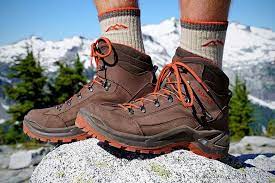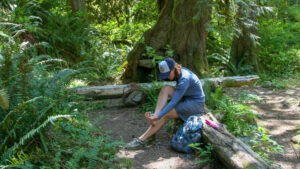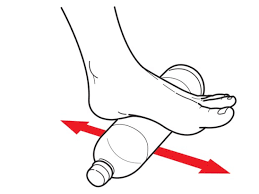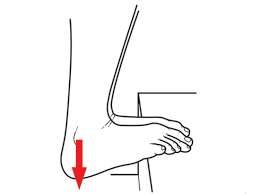Backpacking is a thrilling adventure that allows you to explore the beauty of nature, but it can take a toll on your feet. Foot fatigue and common issues like “hiker’s foot” can turn a dream trek into a painful ordeal. To ensure that your journey is comfortable and enjoyable, it’s crucial to learn how to take care of your feet while backpacking. In this article, we will discuss essential tips to keep your feet in top shape while on the trail.
Choose the Right Footwear

The first step in foot care for backpackers is selecting the appropriate footwear. Ill-fitting or inappropriate shoes can lead to blisters, calluses, and foot pain. Opt for high-quality hiking boots or trail shoes that provide good arch and ankle support. Ensure your footwear is breathable and waterproof to protect your feet from moisture, which can cause various foot issues.
Check for Proper Fit
Regularly check your footwear for proper fit during your backpacking journey. Adjust the laces if needed to avoid hot spots and ensure a snug but not too tight fit. This can help prevent the development of painful pressure points.
Break in Your Footwear
Don’t wait until the day of your hike to wear your new boots or shoes. Break them in gradually to prevent blisters and discomfort. Wear your hiking footwear around your house and on shorter walks to help your feet adjust to them.
Proper Sock Selection
Choosing the right socks is just as important as selecting the right footwear. Avoid cotton socks, which trap moisture and can lead to blisters. Instead, go for moisture-wicking, synthetic or merino wool socks, which will keep your feet dry and comfortable. Remember to bring extra pairs in your backpack.
Foot Hygiene

Maintaining good foot hygiene is essential to prevent the dreaded “hiker’s foot.” Wash your feet daily and dry them thoroughly, paying attention to the spaces between your toes. If you’re backpacking for an extended period, consider carrying foot powder or cream to keep your feet dry and odor-free.
Manage Blisters
Blisters are common when hiking, but they can be managed to avoid painful foot issues. If you feel a hot spot or notice a blister forming, stop and address it immediately. Apply moleskin or blister-specific tape to the affected area, which will provide protection and prevent further friction.
Gradual Increase in Mileage
If you’re planning an extended backpacking trip, gradually increase your mileage to allow your feet to adapt to the terrain. This approach can help reduce the risk of foot fatigue and strain.
Foot Stretches
Foot fatigue can be mitigated by performing simple foot stretches during breaks. Flex and point your toes, rotate your ankles, and gently massage your arches. This will help improve blood circulation and reduce the risk of cramps.


Rest and Elevate
During breaks, take off your boots or shoes to allow your feet to breathe. Elevation can help reduce swelling, so prop your feet up when resting.
Conclusion
Taking care of your feet while backpacking is crucial for an enjoyable and pain-free adventure. Foot fatigue and “hiker’s foot” are common issues that can be mitigated with the right footwear, proper hygiene, and regular foot care. By following these tips and paying attention to your feet, you’ll be better equipped to tackle the trails and create lasting memories while backpacking.
